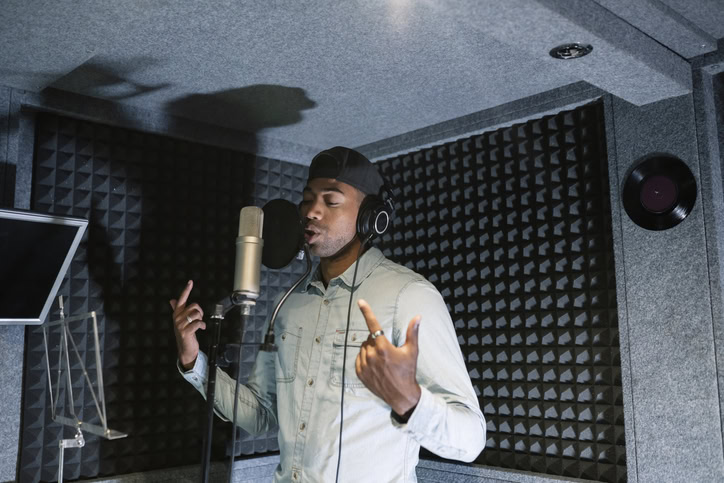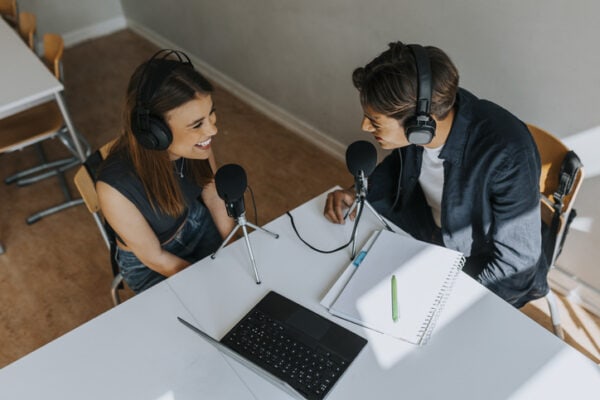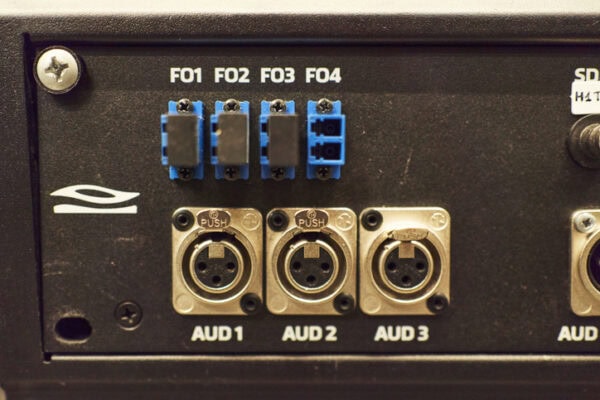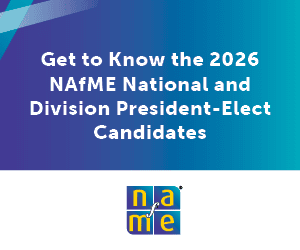/ News Posts / Current Music and Audio Technology Students and Educators Need to Know
Current Music and Audio Technology Students and Educators Need to Know
By Lee Whitmore, sponsored by NAfME Corporate member Focusrite
In the past decade a lot has changed in music and audio technology as it is relevant to education at the secondary and post-secondary levels, and professional use.
The days of MIDI, electric guitar, and digital piano labs have waned with the U.S. adoption of Chromebooks in schools. It is more likely you’ll find one-to-one Chrome devices, or less likely Mac or Windows computers, and cards or racks of music and audio tech gear for students to grab as they are quickly deployed in a classroom or practice rooms.
It is also more and more common to see traditional analog copper audio cables for instruments, mics, mixers, and speakers, replaced—at least in part—by networked Audio-over-IP (AoIP) systems wherein audio travels over standard ethernet cables that are part of a school or campus network. This technology allows very high-quality audio signals to travel from device to device that connects to a building ethernet network anywhere. While not a new innovation, more and more facilities are using AoIP in auditoriums, classrooms, recording studios, and even in outdoor performance locations or on the marching band field.
Relatively new for recording, mixing, playback, and live performance is creating and producing music for listeners and audiences, including Dolby Atmos Music, Apple Spatial Audio, and Sony’s 360 Virtual Mix Environment (VME). All these technologies allow for fully immersive audio listening experiences wherein you hear and feel sound coming from all around you with speakers or headphones or earbuds.
Moreover, the not-so-new phenomenon of students creating, producing and publishing podcasts has exploded in secondary schools and college and university programs in music education and most all other academic disciplines.
How do new learning environments with MIDI instruments and audio devices, as well as networked audio, fit into learning, performing, recording, and sharing your students’ and ensembles’ music? Here are seven brief examples that describe how schools and campuses are innovating with audio and music technology in teaching and learning:
- Greenwich High School, Connecticut, provides a complete music and audio technology experience: Barbara Friedman, career music educator at the high school, offers her students skills in everything from basic music and audio technology skills to advanced recording and podcasting, and she recounts her experience and provides advice in her well-respected book, Teaching Music Through Composition: A Curriculum Using Technology.
- Torrington High School, Connecticut, offers innovative podcasting and storytelling from their music program for all academic subject areas. Music educator Wayne Splettstoeszer was forced to innovate his program during the pandemic, and the result is significant cross-curricular collaborations with other academic disciplines at the high school, with students using podcasting to tell stories for all varieties of assignments and projects, from history and social studies to science and math, and more.
- Ithaca College in Upstate New York records and archives more than 500 performances each academic year at the James J. Whalen Centre for Music. Brian Dozoretz, Manager of Recording Services, and Michael Caporizzo, Director of Sound Recording Technology, transitioned their recording infrastructure to Audio-over-IP, dramatically increasing the quality and flexibility of capturing everything from recitals to concerts, to class sessions and student performances.
- Middle Tennessee State University (MTSU) in Murfreesboro provides students preprofessional experiences at Bonnaroo, where students travel to the renowned festival and record and stream stage performances.
- Career and Technical Education (CTE) music and audio pathways continue to grow nationwide, with students preparing for community college, college and university, and professional work in music, audio, media production, and much more.
To learn more about current and burgeoning technologies in music and audio, there are significant resources available from:
- The Technology Institute for Music Educators (TI:ME)
- The Association for Popular Music Education (APME)
- The MIDI Association
- The Audio Engineering Society (AES)
- The National Association of Music Merchants
About the author:
 Dr. Lee Whitmore is a music, audio, creative digital media, and education thought leader. He’s the Vice President for education at Focusrite Group, which includes Focusrite, Novation, Sequential, Oberheim, ADAM Audio, Martin Audio, TiMax, panLab, Optimal Audio, and Linea Research.
Dr. Lee Whitmore is a music, audio, creative digital media, and education thought leader. He’s the Vice President for education at Focusrite Group, which includes Focusrite, Novation, Sequential, Oberheim, ADAM Audio, Martin Audio, TiMax, panLab, Optimal Audio, and Linea Research.
With a career that spans three decades, his professional assignments have included leadership positions at music industry companies Avid, Sibelius, and Korg USA, as well as the GRAMMY Music Education Coalition and Berklee College of Music. He has a doctorate from Columbia University Teachers College in music education and technology. Because music has dramatically affected his personal life and career, Lee is a vocal advocate for access to music and related arts for all young people.
Lee is an author, educator, public speaker, and industry and education executive. Some of his recent writing includes pieces for the Inter-American Development Bank, the Hechinger Report, and the Washington Post.
Active in service to music, community, and education, Lee is a We Make Noise board member, an executive board member of The MIDI Association, also serving as its volunteer chief financial officer, and leading its MIDI in Music Education (MiME) Special Interest Group.
Contact Lee at lee.whitmore@focusritegroup.com.
Interested in reprinting this article? Please review the reprint guidelines.
The National Association for Music Education (NAfME) provides a number of forums for the sharing of information and opinion, including blogs and postings on our website, articles and columns in our magazines and journals, and postings to our Amplify member portal. Unless specifically noted, the views expressed in these media do not necessarily represent the policy or views of the Association, its officers, or its employees.
Published Date
April 29, 2025
Category
- Technology
Copyright
April 29, 2025. © National Association for Music Education (NAfME.org)






